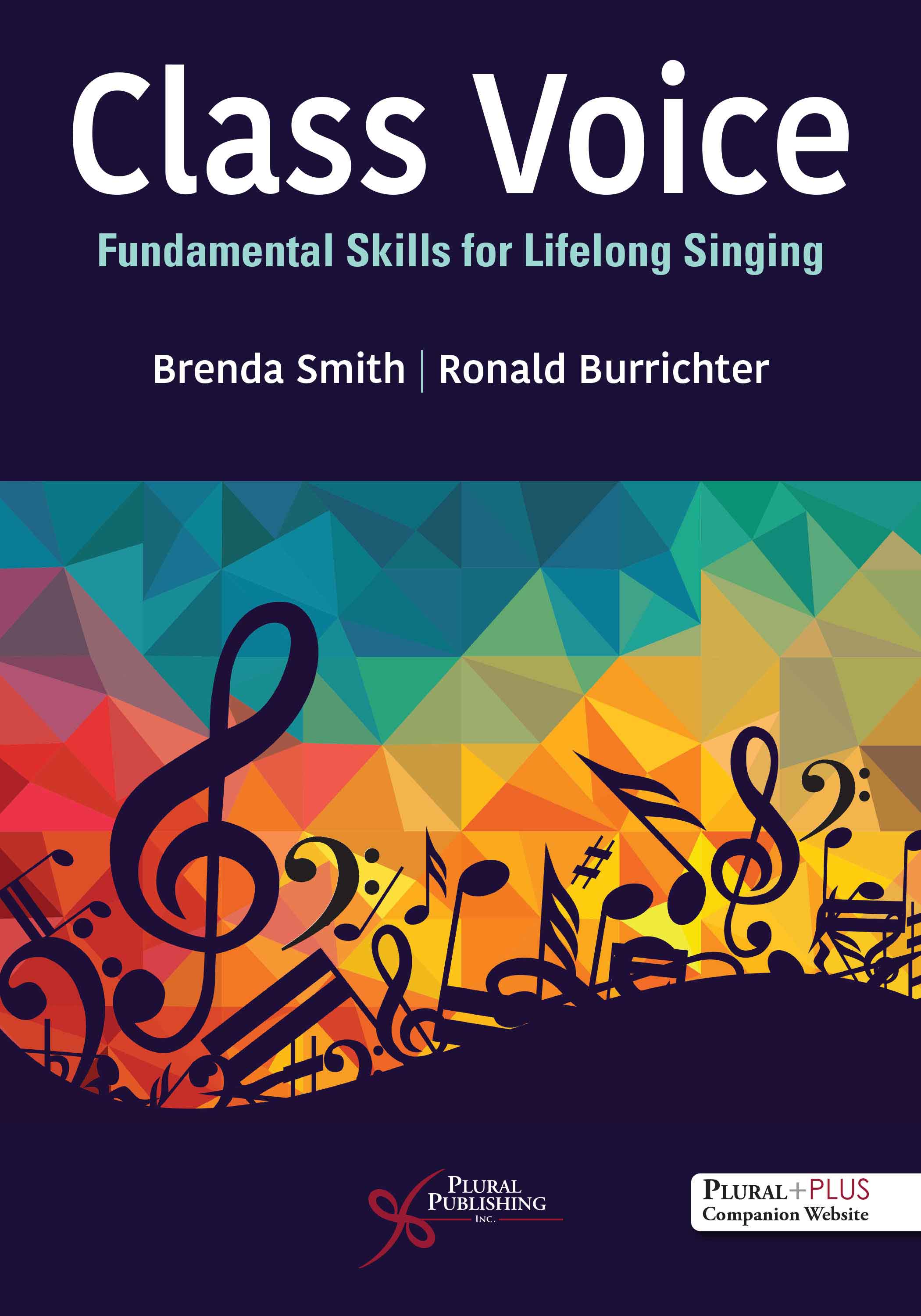
Class Voice: Fundamental Skills for Lifelong Singing
First Edition
Brenda Smith, Ronald Burrichter
Details: 222 pages, B&W, Softcover, 7" x 10"
ISBN13: 978-1-63550-326-5
© 2023 | Available
For Instructors
Purchase
Class Voice: Fundamental Skills for Lifelong Singing is a unique undergraduate textbook which can be adapted to needs of any potential voice user, including music education students, voice students who are not majoring in music, and adult learners. By explaining the basics of singing using practical skills and examples, this text is accessible to students with a wide range of talents, interests, and expertise levels. With chapters devoted to skills for singing solo and in groups, instructors can tailor the included materials to encourage students to become thoroughly familiar with their own voices and to identify and appreciate the gifts of others.
Learning to sing is a process of trial and error. The warm-ups and other in-class performance opportunities contained in this textbook can raise student confidence and minimize anxiety. The chapters about age and size-appropriate repertoire and issues of vocal health provide vital information about preserving the vocal instrument for a lifetime of singing.
Key Features
- Warm-up and cool-down exercise routines, including strategies for relaxing and breath management
- Repertoire topics divided by language and genre and suggestions about how to use the repertoire to develop specific skills
- Issues of diversity, gender, and inclusivity covered in Chapter 9 entitled “The Singing Life”
- Suggestions for comparative listening and questions for discussion to encourage deeper learning
- Adaptable materials which can be tailored to fit interests in choral music, musical theater, folksong, as well as Classical vocal repertoire
- Assignments, evaluation criteria, and assessment forms for midterm and final presentations
- A glossary of key terms
- A bibliography with resources for research and learning
- Information on basic musicianship skill training for those who need it
- A PluralPlus Companion website with a suggested course outline, PowerPoint lecture slides, chapter quizzes and discussion questions with answers along with repertoire lists tailored to suit three different class voice populations
Reviews
“Well known author, musician, and physician Robert T. Sataloff sings the praises of Class Voice: Fundamental Skills for Lifelong Singing in the book’s foreword. He highlights how the book is different from other texts on the same topic due to its flexible, open format that encourages teachers to use the information provided to design their own curriculum in the way they see fit. He also notes his appreciation for the authors’ use of “evidence-based voice pedagogy” in a way that intentionally dispels many of the myths that can confuse beginning singers.
…It is no surprise that he contributes a chapter to Class Voice, as well, titled “Anatomy and Physiology of the Voice.”
The bulk of this newest book, however, is written by Smith and coauthor Ronald Burrichter, with each of them providing chapters of their own while also combining their efforts on cowritten chapters.
Given Smith’s expertise, there is natural overlap in Class Voice with her previous publications through sections on diction, choral singing, vocal aging, and lifelong singing…
The book offers a variety of practical suggestions and advice for those teaching—or considering teaching—class voice. The authors provide guidelines for class presentations (with sample assessment forms), ideas for midterm projects, and sample templates for practice logs. The companion website contains additional resources, including suggested syllabi and weekly lesson plans. The authors encourage readers to pick and choose the sections of the book they find most useful and applicable to their work.
As accomplished professional musicians, Smith and Burrichter shift the focus of Class Voice from perfectly pristine performances to exploring the intrinsic value singing has through its ability to build community and enhance quality of life. “Singing is a simple, priceless gift,” they write. “With your voice, you announced your presence on Earth. Let its presence in your life be a constant source of creativity, comfort, and companionship.”
–Brian Manternach, DM, University of Utah, from the Classical Singer (January 2023)
"Overall, however, Class Voice: Fundamental Skills for Lifelong Learning represents a valuable addition to the resources available for singing and singing teaching; of direct benefit to those engaging in group learning, but also a potentially useful introductory text for singing students in any environment."
— Shelley Hulcombe, Griffith University, in Australian Voice (November 2024)
Foreword by Robert T. Sataloff, MD, DMA, FACS
How to Use This Book
A Message to Students
A Message to Teachers
Getting Started: Studying Singing Together
Acknowledgements
Contributors
Reviewers
Introduction. Class Voice and Strategies for Lifelong Singing
Song: With and Without Words
Instruments versus Voice
Human Growth: Musical, Physical, Aesthetic
Speaking Voice and Singing Voice Use
Musical Skill Training and Singing
Issues of Fach and Longevity
Conclusion
Discussion Questions
References
Chapter 1. Skills for Learning to Sing
Brenda Smith
The Basics of Singing
Relaxation
Posture
Breathing
Resonance
The Why and How of Warm-Ups and Cool Downs
Discussion Questions
References
Chapter 2: Anatomy and Physiology of the Voice
Robert Thayer Sataloff
Anatomy
Physiology
Conclusion
References
Chapter 3. Skills for Learning to Sing Music
Ronald Burrichter
Introduction
Musicianship Skills
Singing and Rhythm
Basics of the Printed Page
Other Rhythmic Tricks
Singing and Note Learning
Understanding Aural Skill Levels
Strategies for Lifelong Music Learning
Conclusion
Discussion Questions
Resources for Further Learning
Music Learning
Online Resources for Music Learning
Choral Singing
Chapter 4. Skills for Learning to Sing Text
Brenda Smith
The Italian Language and Singing Skill
International Phonetic Alphabet
Tricks for Learning IPA
The Value of the International Phonetic Alphabet
Learning the IPA in English
Consonants
Singing Versus Speaking Vowels and Consonants
Using the International Phonetic Alphabet as a Tool
Phonetic Transcriptions and “Rhyming Vowels”
Sounds in Italian, German, and French
Diction in Context
Conclusion
Discussion Questions
Resources for Further Reading
References
Chapter 5. Singing Solo
Brenda Smith
The Singing Art in the Western World
Bel Canto, Legato, and the Even Scale
Range, Registration, and Tessitura
Messa di Voce or “Measuring” the Voice
Tone Quality and Vibrato
Conclusion
Discussion Questions
Resources for Further Reading
Reference
Chapter 6. Singing with Others
Brenda Smith and Ronald Burrichter
Singing Together in Choirs
A Brief History of Early Choral Singing
Unison Singing
Choral Breathing
Canons
Suggested Canons for Class Voice Use
Two-Part Singing
The Singing Life of Choral Singers
Singing Soprano in a Choir
Singing Alto in a Choir
Singing Tenor in a Choir
Singing Baritone or Bass in a Choir
Choral Singing and Tuning
Challenges of Choral Singing
Score Marking
Conclusion
Discussion Questions
Resources for Further Reading
Reference
Chapter 7. Skills for Mastering Repertoire
Brenda Smith and Ronald Burrichter
Warm-ups and Voice Building
Relaxation and Posture
Breathing and Resonance
Cool-Downs
Solving Vocal Problems in Repertoire
Repertoire Learning Skills
Learning a Song: Step 1 Is the Text
Word Mastery
Understanding Vowels
Materials for Score Preparation
Establishing the Context for a New Song
Sample Fact Sheet for Vocal Repertoire
Musical Preparation
Practice Strategies
Sample Practice Logs
Sample One
Sample Two
Sample Three
Practice Styles
The Role of Mindfulness and Joy in Practice
Performance Anxiety and Musical Preparation
Tips for Mindful Preparation
Performing and Mental Toughness
Physical Factors and Performance
Singing and Sharing the Stage
Conclusion
Discussion Questions
Resources for Further Reading
Practice Skills
Performance Anxiety
References
Chapter 8. Vocal Skills and Repertoire
Brenda Smith and Ronald Burrichter
What Singers Sing
Folk Songs
Early Italian Songs and Arias
British and American Song
German Lieder
French Mélodie
Learning Vocal Skills through Repertoire
Suggested Vocal Repertoire and Lesson Plans for Class Voice Study
Breath Coordination and Gentle Onset
Legato and Phrasing
Vocal Agility and Flexibility
Vocal Color and Text Painting
Range and Registration
Messa di voce
Opera, Singspiel, and Operetta
Musical Theater
Suggested Musical Theater Repertoire for Class Voice
Spirituals and African American Art Songs
Putting It All Together
Interpreting Text and Music
Performance Strategies for Class Presentations
Midterm and Final Projects and Performances
Midterm Presentation
Final Presentation
Program Notes and Research
Performance Etiquette
Criteria for Evaluation
“An die Musik” (To Music) – An International Calling Card for Singers
Conclusion
Discussion Questions
Recommended Online Resources
Resources for Lesson Planning
Resources for Repertoire Acquisition
Resources for Music Purchase
Resources for Further Reading
References
Chapter 9. The Singing Life
Considerations for the Adolescent Singing Voice
Vincent Oakes
Singing Fundamentals for the Adolescent Voice
Phonation Onset and Duration
Non-Pitched Exercises for the Adolescent Voice
Limited Range Exercises for the Adolescent Voice
Aural Development of the Adolescent Singer
Balance and Physicality for the Developing Singer
Additional Considerations
Conclusion
Discussion Questions
For Further Reading
References
Singing and Women
Brenda Smith
Finding Your Voice
Women and Choral Singing
Healthy Voice Use
Maintaining Your Voice
Vocal Aging: To Sing or Not to Sing
Vocal Limitations and Strategies
Conclusion
Discussion Questions
References
Singing Life of Men
Ronald Burrichter
The Singing Life of Tenors
Men Falsetto Voices
The Singing of Life of Baritones and Basses
Conclusion
Discussion Questions
Resources for Further Reading
Gender Spectrum Voice
Erin Nicole Donahue
Working with the Gender Diverse Population
Transition and Hormones
Aspects of Voice and Verbal Communication
The Transgender or Gender Diverse Singer
Considerations for the Music Educator
Conclusion
Discussion Questions
Resources for Further Reading
Chapter 10. The Science of Healthy Singing
Erin Nicole Donahue
Vocal Health and Wellness
A Brief Overview of Anatomy and Physiology
Respiration
Maximizing Vocal Health
Voice Disorders and Laryngeal Pathology
The Voice Care Team
Conclusion
Discussion Questions
Resources for Further Reading
Conclusion. The Benefits of Skillful Lifelong Singing
Brenda Smith and Ronald Burrichter
Singing Alone and With Others
The Intrinsic Value of Singing
Singing in the 21st Century
21st Century Vocal Pedagogy
Maintaining Fundamental Skills for Singing
Cautions and Strategies
Conclusion
Discussion Questions
Resources for Further Reading
References
Glossary
Bibliography: Resources for Research and Learning
Index
Class Voice: Fundamental Skills for Lifelong Singing comes with access to supplementary student and instructor materials on a PluralPlus companion website.
STUDENTS:
To access the student materials, you must register on the companion website and log in using the access code printed on the inside front cover of your book.
INSTRUCTORS:
To access the instructor materials, you must contact Plural Publishing, Inc. to be verified as an instructor and receive your access code.
Email: instructormaterials@pluralpublishing.com
Tel: 866-758-7251 (toll free) or 858-492-1555
*Note for students: If you have purchased this textbook used or have rented it, your access code will not work if it was already redeemed by the original buyer of the book. Plural Publishing does not offer replacement access codes for used or rented textbooks.
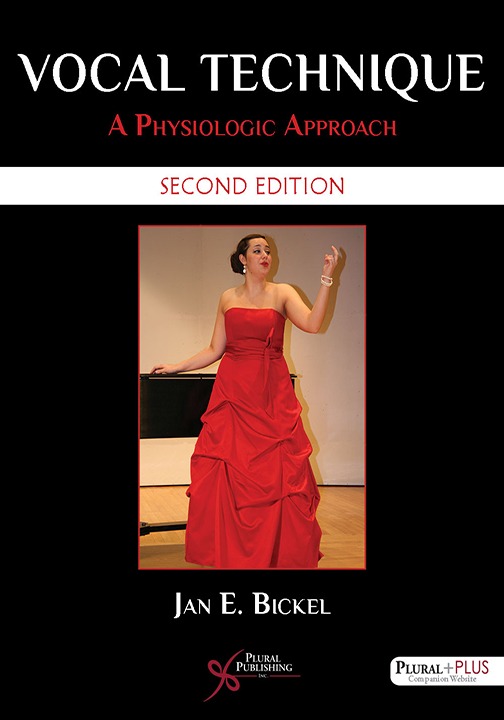
Vocal Technique: A Physiologic Approach
Second Edition
Jan Bickel
Details: 248 pages, B&W, Softcover, 8.5" x 11"
ISBN13: 978-1-94488-333-1
© 2017 | Available
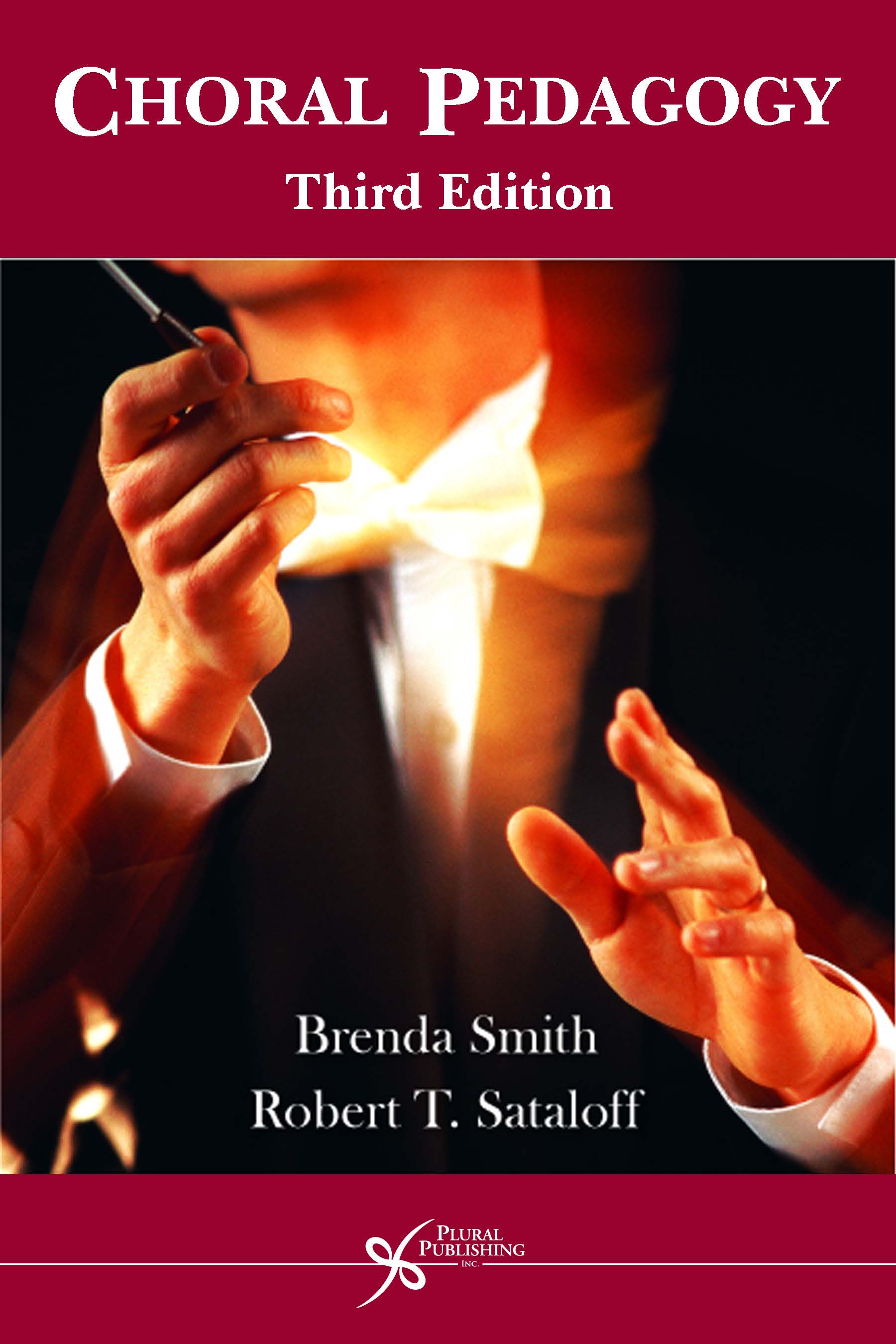
Choral Pedagogy
Third Edition
Brenda Smith, Robert T. Sataloff
Details: 344 pages, B&W, Softcover, 6" x 9"
ISBN13: 978-1-59756-535-6
© 2013 | Available
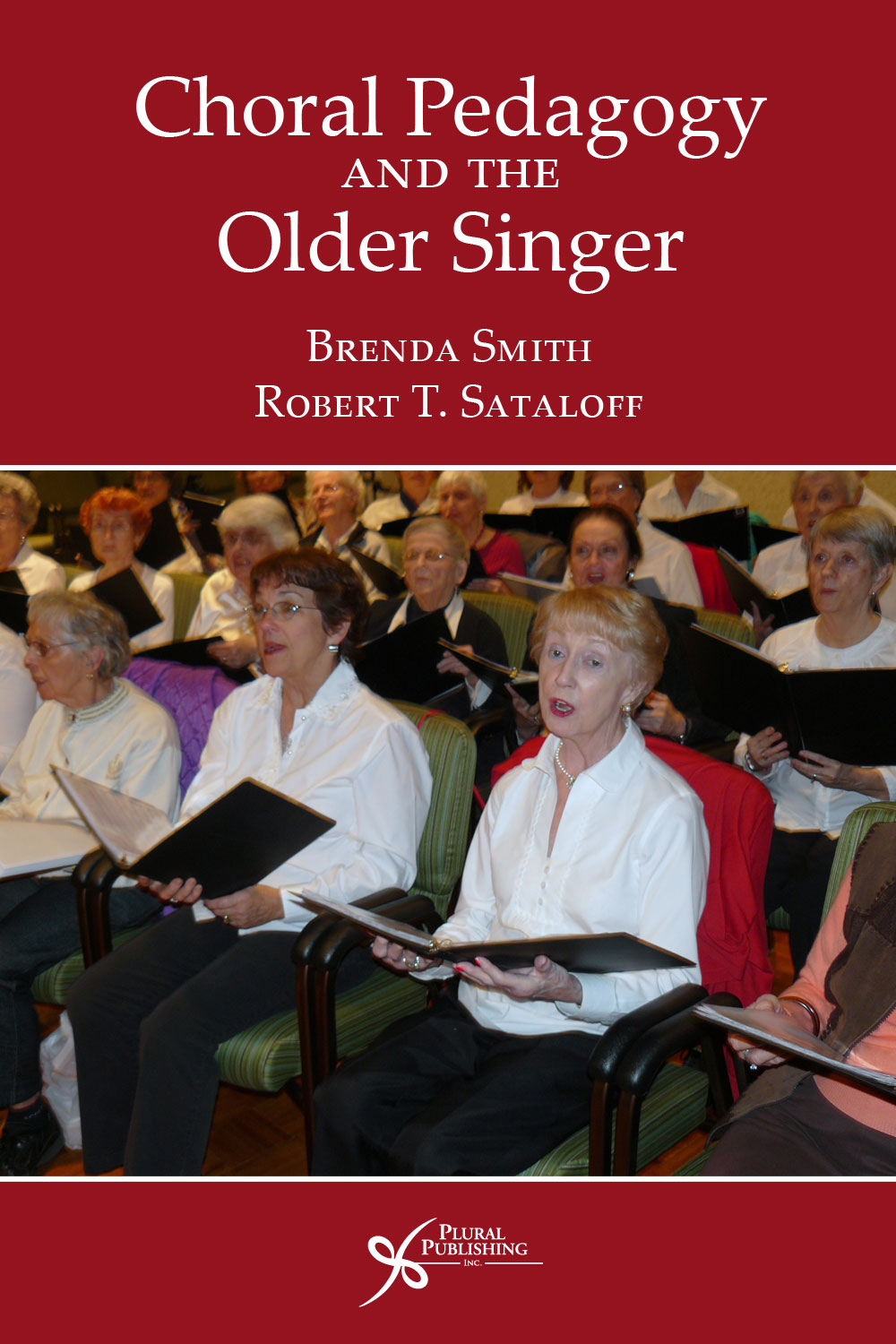
Choral Pedagogy and the Older Singer
First Edition
Brenda Smith, Robert T. Sataloff
Details: 368 pages, B&W, Softcover, 6" x 9"
ISBN13: 978-1-59756-438-0
© 2012 | Available
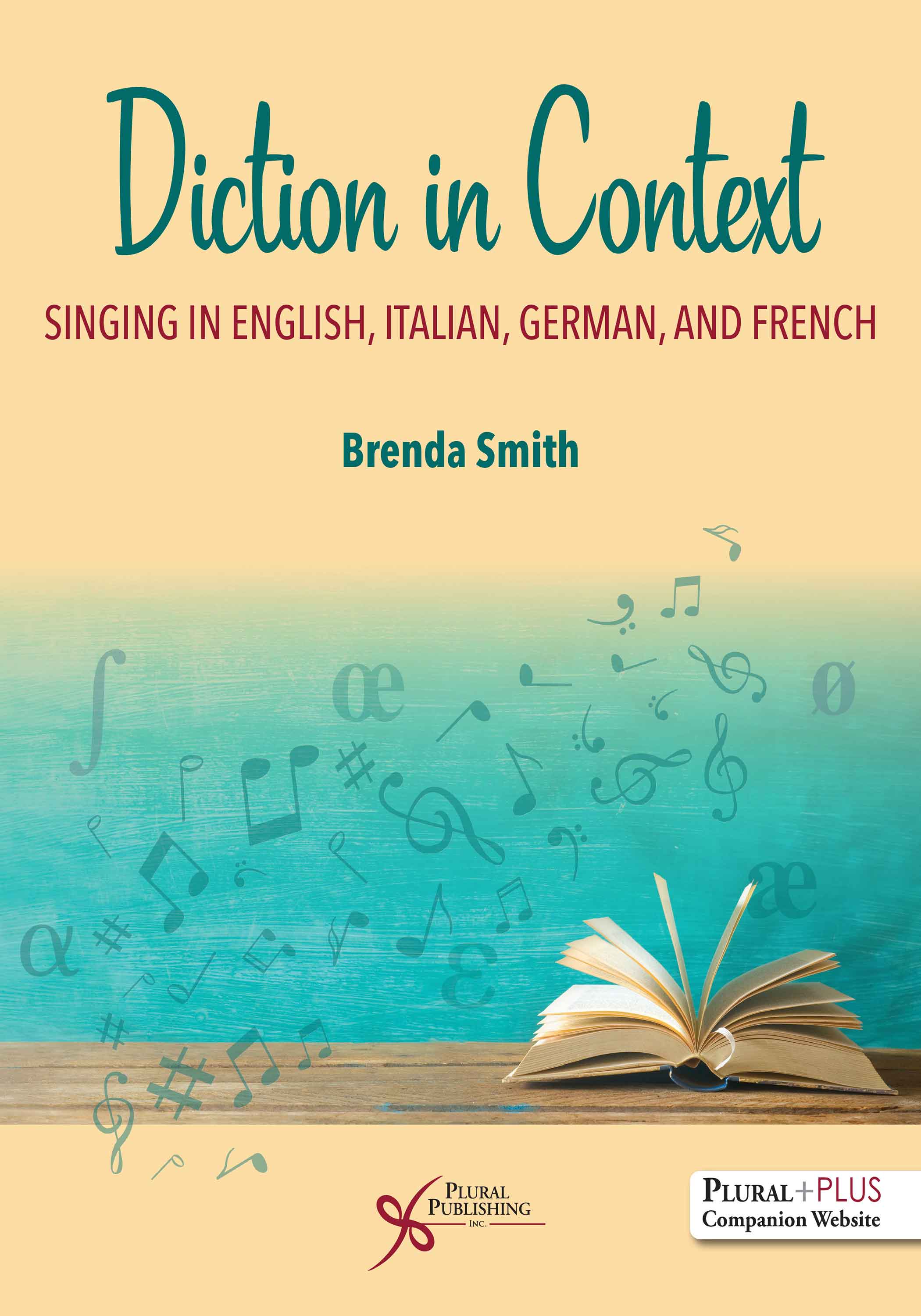
Diction in Context: Singing in English, Italian, German, and French
First Edition
Brenda Smith
Details: 345 pages, B&W, Softcover, 8.5" x 11"
ISBN13: 978-1-63550-120-9
© 2021 | Available
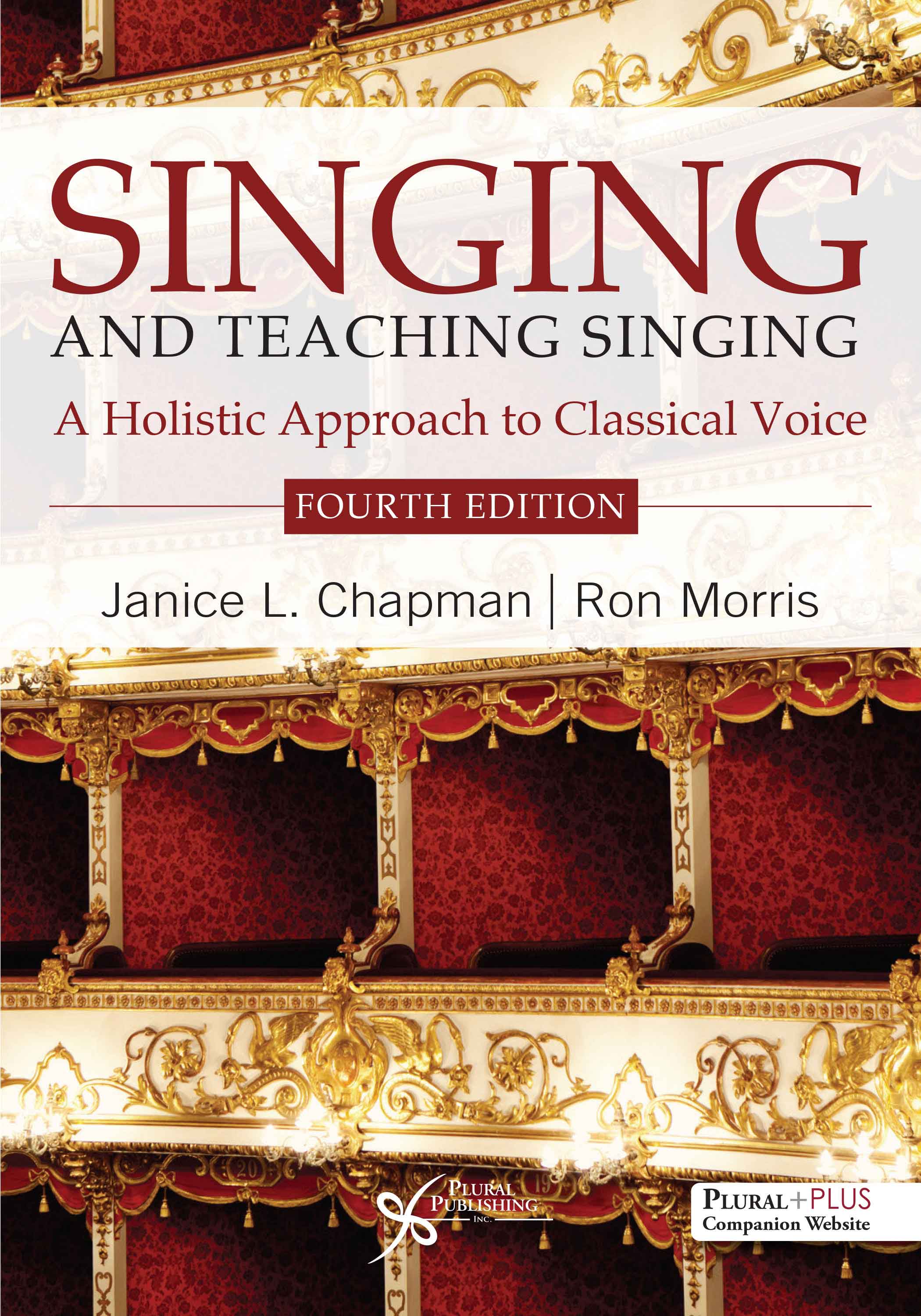
Singing and Teaching Singing: A Holistic Approach to Classical Voice
Fourth Edition
Janice L. Chapman, Ron Morris
Details: 620 pages, B&W, Softcover, 7" x 10"
ISBN13: 978-1-63550-339-5
© 2023 | Available


